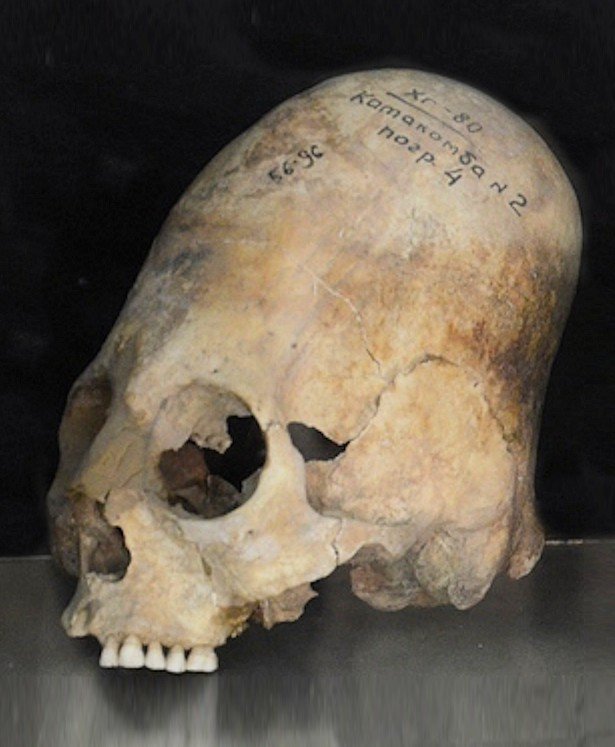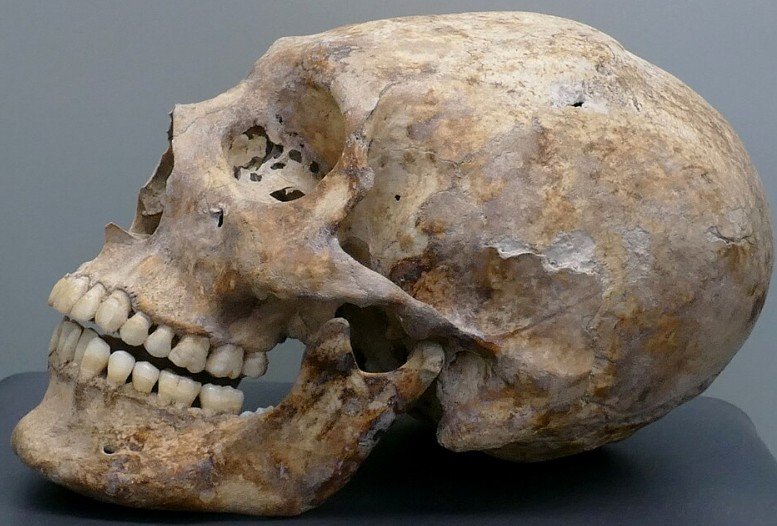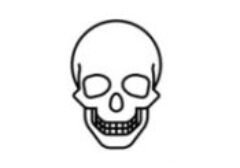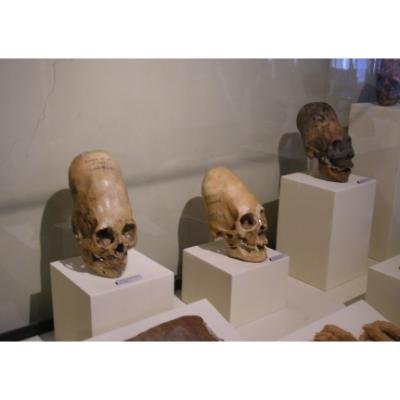The phenomenon of elongated heads, also known as cranial deformation, has fascinated anthropologists, historians, and the general public alike. This practice, which involves deliberately reshaping the human skull, has been observed in various cultures throughout history. The intentional alteration of head shapes raises intriguing questions regarding the motivations behind such practices and the implications they have for identity, status, and cultural expression.
Throughout different epochs and civilizations, certain groups have employed a range of methods to achieve elongated head shapes, often during the early years of life when the skull is still malleable. Various techniques have been documented, including the use of head bindings, wooden boards, or cloth wrappings. Each method reflects unique cultural beliefs and aesthetic standards. Interestingly, this practice has been identified in civilizations as diverse as the ancient Maya, various Native American tribes, and certain European aristocracies.
The motivations for head elongation are equally diverse and complex. Some cultures believed that elongated heads signified higher intelligence or nobility, while others viewed them as a means of enhancing beauty. As such, this intriguing practice intersects with broader themes related to human perception, belonging, and the shaping of identity in social contexts. The cultural significance of elongated heads can’t be underestimated, as it provides valuable insights into human behavior and societal values at different historical junctures.
As we delve deeper into the topic, it will become essential to explore both the scientific and cultural implications of cranial deformation. By examining the archaeological evidence and the social dynamics surrounding this practice, we aim to uncover the rich tapestry of meanings that elongated heads have held across the ages. As we unfold these layers, we will not only satisfy our curiosity but also appreciate the diverse narratives woven into the fabric of human history.
Contents
- 1 What is an Elongated Head?
- 2 The History of Head Elongation
- 3 Cultural Significance of Elongated Skulls
- 4 The Science Behind Head Elongation
- 5 Modern Instances of Elongated Heads
- 6 Comparative Analysis: Elongated Heads Around the World
- 7 Impact of Media and Pop Culture
- 8 Conclusion: Embracing Diversity in Human Appearance
What is an Elongated Head?

An elongated head, often referred to as cranial deformation, is a physical characteristic wherein the skull is shaped into an elongated form, typically through specific practices. In my opinion, this phenomenon occurs when an external force applies pressure to the skull during early infancy when the bones are still malleable. Certain cultures employ this practice for various reasons, ranging from aesthetic preferences to social status indicators. The process usually begins with the wrapping of the infant’s head or the application of a cap-like device. Over time, this pressure leads to visible elongation.
The most common form of elongated heads is the oblong skull shape, which features a noticeable lengthening along the cranial axis. This shape can vary significantly between cultures; some communities achieve a pronounced elongation, while others may exhibit more subtle variations. For example, the Mesoamerican cultures, such as the Maya and Aztec, are known for ritualistic cranial shaping, which they associated with beauty and nobility. Alternatively, in some Andean societies, skull elongation was linked to spiritual significance and ancestral lineage.
The History of Head Elongation

The practice of head elongation, notably prevalent in several ancient civilizations, reflects cultural significance and social identity. This ancient custom dates back thousands of years, with evidence found primarily in Africa and among the Egyptians. Ethnographic studies suggest that various African tribes, including the Mangbetu people of the Democratic Republic of the Congo, engaged in head elongation as a means of aesthetic expression and cultural identity. It is believed that this practice originated approximately 6000 years ago, potentially linked to tribal customs, signaling social status and attributes of beauty.
The method of achieving elongated skulls involved tightly binding the heads of infants using wooden boards or cloth, which gradually altered the natural shape of the skull over time. For the Mangbetu, such head shaping was often tied to notions of nobility, beauty, and lineage, and the elongated head became a symbol of prestige. Historical accounts delineate how the Mangbetu people revered individuals with elongated skulls, associating them with intelligence, strength, and leadership.
Similarly, ancient Egyptians also practiced forms of head elongation, though evidence suggests varying motivations. One of the most notable examples is the iconic bust of Nefertiti, which features an elongated head. Scholars propose this may have been a deliberate choice reflecting aesthetic preferences or possibly a religious connection to the divine. Head elongation in ancient Egypt could symbolize a connection to gods or signify a divine right to rule, thereby integrating complex socio-political connotations into the practice.
This historical overview illustrates that head elongation was not simply a random trend but rather a deeply-rooted cultural practice with multifaceted significances. As these ancient civilizations valued physical attributes symbolizing beauty, power, and divine aspects, the elongated skulls became important markers of identity and belief systems. Through examining the past, one can appreciate the profound cultural implications surrounding the elongated heads that still intrigue contemporary societies today.
Cultural Significance of Elongated Skulls
The practice of skull elongation has captured the fascination of anthropologists and historians due to its significant cultural implications across various societies. In many cultures, elongated heads were not merely a physical alteration; they served profound social and aesthetic purposes. For instance, in ancient Egypt, elongated skulls were often associated with nobility and beauty. Royalty was depicted with elongated heads in sculptures and art, suggesting that this physical characteristic was synonymous with divinity and high status. The belief that such head shapes signified superiority reinforced the social hierarchies prevalent in ancient Egyptian society.
Similarly, the Mangbetu people of the Democratic Republic of the Congo practiced cranial elongation as a tradition linked to beauty and social distinction. Infants underwent shaping through bindings which, over time, created an elongated skull. For the Mangbetu, this practice was indicative of aesthetic ideals and was associated with intelligence and social prestige. The elongated head was celebrated and emulated within their culture, often reflecting an individual’s family lineage and status in society. The social perception surrounding these elongated heads was an intricate blend of beauty, power, and cultural identity.
Throughout history, various societies have engaged in this practice, each attributing its own meaning and significance to it. While the physical act of cranial shaping varied remarkably, the underlying themes of identity, beauty, and status remained consistent. This cultural phenomenon serves as a reminder of the diverse ways in which human societies interpret physical attributes and their relationship to social dynamics. Understanding the cultural significance of elongated skulls reveals a deeper insight into the values, beliefs, and social structures of the civilizations that embraced this practice.
The Science Behind Head Elongation
Head elongation, often referred to as cranial deformation, has intrigued scientists and anthropologists for centuries. This practice, prevalent in various cultures throughout history, involves the intentional shaping of the skull during early childhood through methods such as head binding. The primary biological intention behind such modifications is to achieve a desired skull shape, which is often associated with status, beauty, or cultural identity.
The physiological implications of head elongation are multifaceted. When a child’s skull is bound or shaped, the bones of the cranium are forced into new configurations. The human skull comprises several bones, including the frontal, parietal, and occipital bones. As these bones are malleable during infancy, the application of consistent pressure can lead to changes in their growth patterns, ultimately resulting in an elongated head. However, it’s essential to note that the extent of these changes can vary significantly based on the methods employed and the duration of exposure.
Theories regarding the effects of head binding point to several potential health implications. Some researchers argue that elongated heads may be a reflection of genetic predispositions that interact with environmental factors, including the methods of cranial deformation. There are suggestions that cultures that practiced head elongation experienced lesser incidences of certain health complications due to either enhanced cranial capacity or specific social structures that promoted better overall health. Conversely, there are concerns about potential complications, including increased intracranial pressure or developmental issues that may arise from extreme deformation.
Continued studies seek to unravel these complexities further, not only exploring the health implications but also the broader cultural significance of such practices. The blending of biological and sociocultural perspectives allows for a deeper understanding of how head elongation reflects human diversity and adaptability.
Modern Instances of Elongated Heads
The practice of head elongation, historically rooted in various cultures, continues to evoke interest and curiosity in modern times. While traditionally associated with specific populations, such as the ancient Mayans and certain tribes in Africa, instances of elongated heads can still be found today, albeit in different forms and contexts. Contemporary practices related to this unique body modification are often perceived in a more complex light, influenced by cultural heritage, social status, and personal identity.
In some indigenous communities, head elongation remains a cherished cultural marker. For instance, the mangbetu people in the Democratic Republic of the Congo still practice forms of cranial shaping to maintain their traditions and express their heritage. This practice is viewed as a badge of beauty and status, linking individuals to their ancestral roots. However, these traditions may face challenges due to globalization and the changing perceptions of beauty among younger generations. As Western beauty standards continue to permeate various societies, some individuals reject these traditional practices in favor of more contemporary ideals.
Meanwhile, in Western contexts, the fascination with elongated heads often takes on a more anthropological lens, with artists and researchers showcasing historical artifacts and human skulls in exhibitions. New technologies in medical imaging and anthropology have allowed scholars to study these elongations more closely, revealing insights into the methods and cultural implications surrounding the practice. While some modern individuals experiment with cranial shaping through artificial means, such as wearing head molds, these practices are less common and often elicited by personal or aesthetic choices rather than cultural tradition.
In today’s society, the perception of elongated heads varies significantly. While some view it as a fascinating aspect of human diversity and cultural expression, others may regard it with skepticism or misunderstanding. As discussions around beauty and identity continue to evolve, the historical practice of head elongation remains a captivating subject worthy of exploration and respect.
Comparative Analysis: Elongated Heads Around the World
The phenomenon of elongated heads, known as cranial shaping, has been observed in various cultures across the globe, each with its unique practices and cultural significance. One of the most prominent examples is found in Africa, specifically among the Mangbetu and the Wahu tribes of the Democratic Republic of the Congo. The Mangbetu people’s traditional practice of head elongation involved binding the heads of infants with cloth and other materials to create the desired shape. This custom was deeply embedded in their social hierarchy, symbolizing beauty, intelligence, and nobility. The elongated heads of the Mangbetu were not just a physical feature but often a source of pride and cultural identity.
In contrast, Peruvian cultures, such as the Paracas and Nazca, showcased a different approach to cranial deformation. The Paracas individuals, known for their elaborate cranial shaping practices, utilized similar binding techniques but would often resort to additional methods involving the manipulation of the skull over extended periods. The resulting head shapes varied significantly from those in Africa, often tending to be more elongated and pronounced. The elongated crania in these societies were believed to reflect higher status or connection to the divine. Additionally, the iconography found in ancient Paracas textiles frequently depicted elongated heads, underscoring the aesthetic and cultural importance attached to this feature.
Despite the geographical differences, a notable parallel exists between these cultures: both engaged in cranial shaping as a means to signify social status and group identity. While the Mangbetu and Peruvian peoples each had distinct designs and practices, the shared belief in beauty and social standing linked their customs closely. The studies of these elongated heads provide fascinating insights into the interplay between culture, identity, and the human body, ultimately highlighting the rich diversity of human expression across different civilizations.
Impact of Media and Pop Culture
The representation of elongated heads in media and popular culture has played a significant role in shaping public perceptions of this unique cultural practice. In various films, television shows, and literature, elongated heads are frequently portrayed as symbols of alienation, otherness, or even mysticism. Such depictions often evoke curiosity and fascination but may also lead to misconceptions about the cultures that engage in head elongation.
Many films portray characters with elongated heads as extraterrestrial beings, reinforcing the idea that unusual physical traits are linked to abnormalities, fear, or danger. This stereotype can overshadow the realities of cultures that practice head elongation intentionally, often as part of historical customs or rites of passage. Thus, while elongated heads might intrigue audiences, the media’s sensationalized approach frequently neglects the rich cultural significance attached to this practice.
In literature, authors from various genres have also contributed to the narrative surrounding elongated heads. These written works may either glorify the exoticness associated with the trait or present it as a grotesque anomaly. Consequently, the portraying of elongated heads often drifts away from the genuine cultural contexts, leading to a skewed understanding among readers and viewers. Art, too, has reflected these notions, with various artists using elongated heads as a recurring motif that elicits both interest and misunderstanding.
Moreover, misconceptions surrounding elongated heads can lead to stigmatization of the cultures involved. The idea that these practices are strange or primitive often oversimplifies complex cultural traditions and contributes to a narrative of superiority by external observers. The challenge lies in addressing these misunderstandings through education that highlights the historical and social factors driving the techniques of head elongation.
Conclusion: Embracing Diversity in Human Appearance
Throughout history, the phenomenon of elongated heads has captured the attention of scholars, cultures, and societies alike. This unique physical trait, often achieved through practices such as head binding, invites us to explore the rich tapestry of human diversity. Understanding elongated heads goes beyond mere observation; it encourages reflection on our perceptions of beauty and the cultural significance that lies behind such modifications.
Various cultures around the world have embraced the practice of skull elongation for centuries, viewing it as a mark of beauty, status, or identity. These practices are more than aesthetic choices; they serve as expressions of cultural heritage and societal values. By respecting these diverse practices and recognizing their historical contexts, we encourage appreciation rather than judgment. It is essential to acknowledge that human variation is a natural aspect of our existence, deserving of validation and respect.
In an increasingly globalized world, fostering an open-minded attitude towards physical differences is crucial. The similarities and differences in human appearance can enrich our understanding of what it means to be human. By embracing the diversity of human forms, we not only honor the history and culture behind practices like head elongation but also promote a broader dialogue about beauty, identity, and acceptance. Such conversations pave the way for developing a more inclusive perspective that celebrates individual uniqueness without imposing a singular definition of beauty.
Ultimately, acknowledging the rich history and cultural significance of elongated heads and similar body modifications contributes to a more nuanced understanding of humanity. It is our collective responsibility to value diversity in all its forms, recognizing that beauty lies in the myriad ways we express our identity and connect with our heritage.

